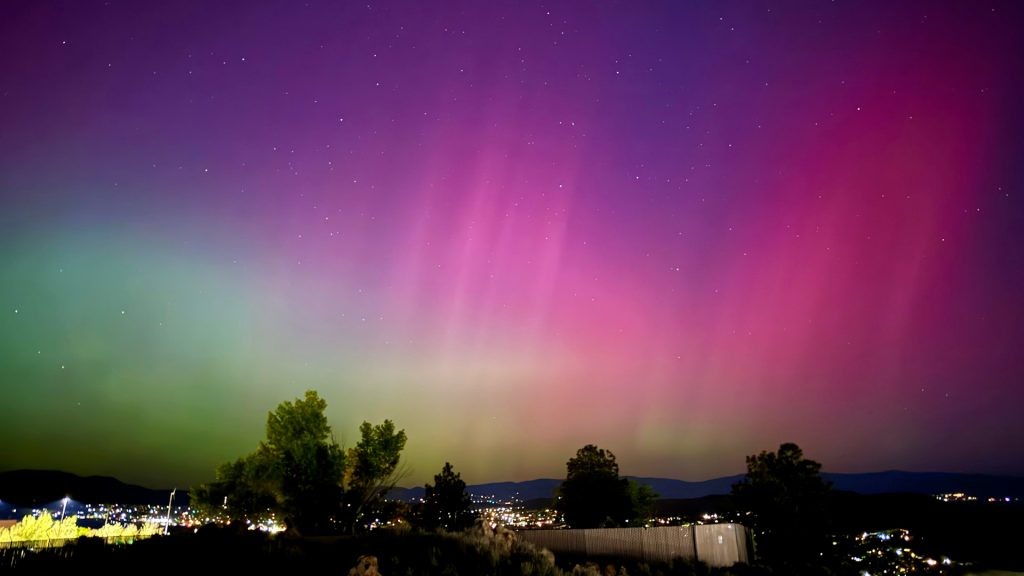Severe solar storm sparks rare Aurora sightings, infrastructure warnings

A powerful geomagnetic storm triggered by a solar eruption could allow people across much of the U.S. to see the northern lights through Tuesday, according to the National Oceanic and Atmospheric Administration. The agency’s Space Weather Prediction Center said the storm reached G4-level intensity, considered “severe” on a five-point scale.
At G4 strength, auroras have historically appeared as far south as Alabama to northern California. This week’s forecast shows potential sightings extending to Missouri, Pennsylvania and parts of Utah and Nevada. Skywatchers in high-latitude states, such as Alaska, Montana, North Dakota and Michigan, can expect the best views, especially after sunset and into the early morning hours.
Where and when were the northern lights visible?
The geomagnetic storm that began Saturday night into Sunday, June 1, brought vivid aurora sightings across much of the northern U.S., with NOAA reporting activity from Washington and Michigan to as far south as Indiana and Pennsylvania.
In a rare occurrence, the Northern Lights were also visible in parts of Texas, including San Antonio, according to KSAT meteorologists. The city, which previously recorded aurora sightings during strong solar events in May and October 2024, experienced another brief display visible to some residents.
NOAA forecasts that auroral activity may continue through Monday and possibly into early Tuesday, though they expect conditions to weaken. States with continued visibility potential include Minnesota, Michigan, Vermont and Maine.
What is causing the storm and what does G4 mean?
The storm stems from a coronal mass ejection (CME) that erupted from the sun Friday, accompanied by an M8-class solar flare. NOAA classifies G4 storms as major disturbances in Earth’s magnetic field that can trigger auroras and disrupt infrastructure systems.
The Space Weather Prediction Center warned that damage is possible but said it has alerted key technology operators, and most systems can handle events like this.
Could this impact power grids or GPS systems?
Yes, but likely in limited ways. Severe geomagnetic storms can interfere with satellites, GPS signals and high-frequency radio transmissions. Power grid fluctuations could occur, but utility companies have prepared to manage them. As of Monday, NOAA had not reported any significant service disruptions.
How can you see the aurora from your location?
To catch a glimpse of the aurora, head to a dark area with an open view of the northern sky. Smartphone cameras, especially in night mode, often detect faint auroras invisible to the eye.
Peak viewing typically occurs between 10 p.m. and 2 a.m. local time. If conditions weaken, visibility may retreat northward; if they intensify, additional states across the central U.S. could get a surprise show.





